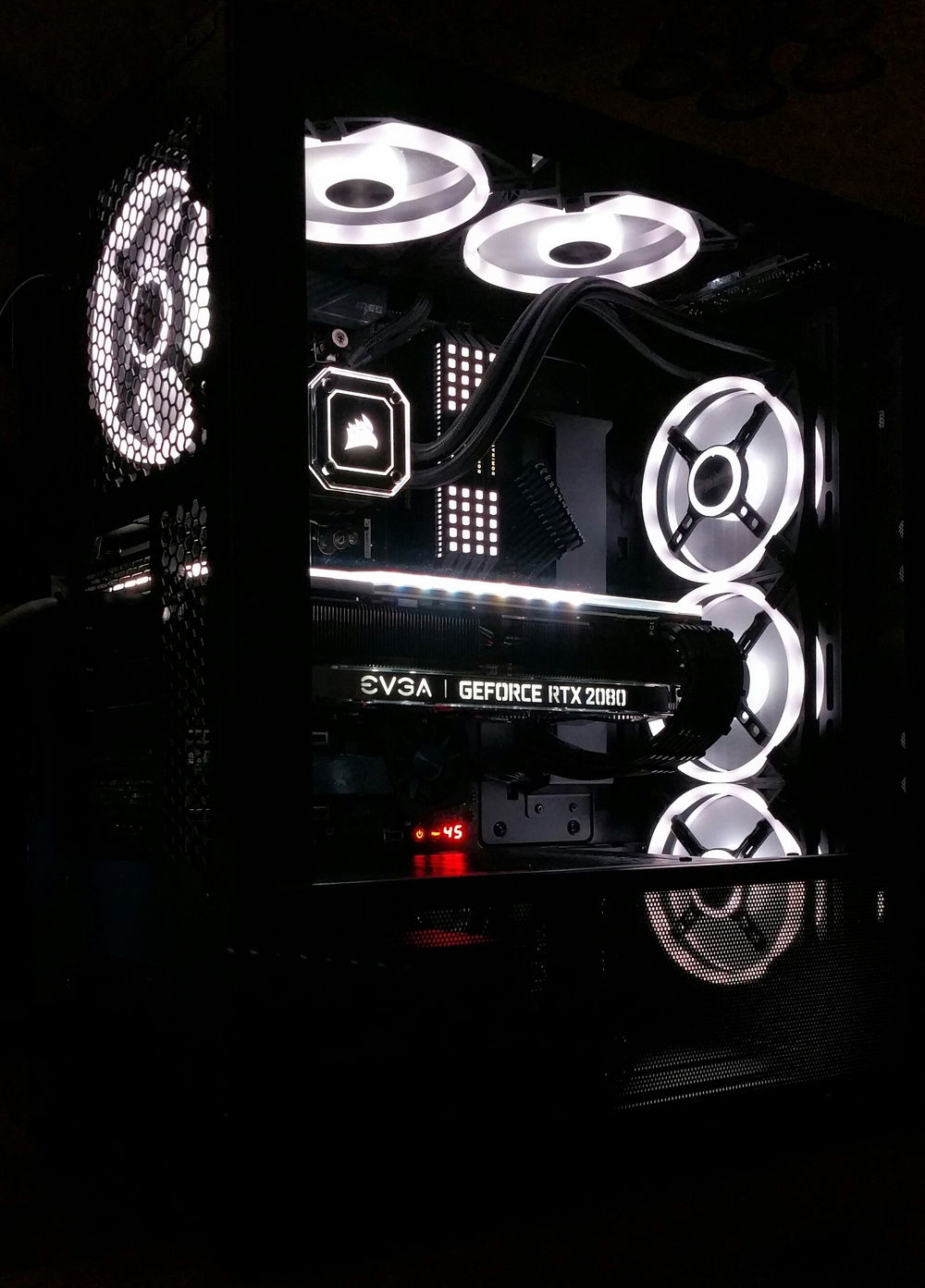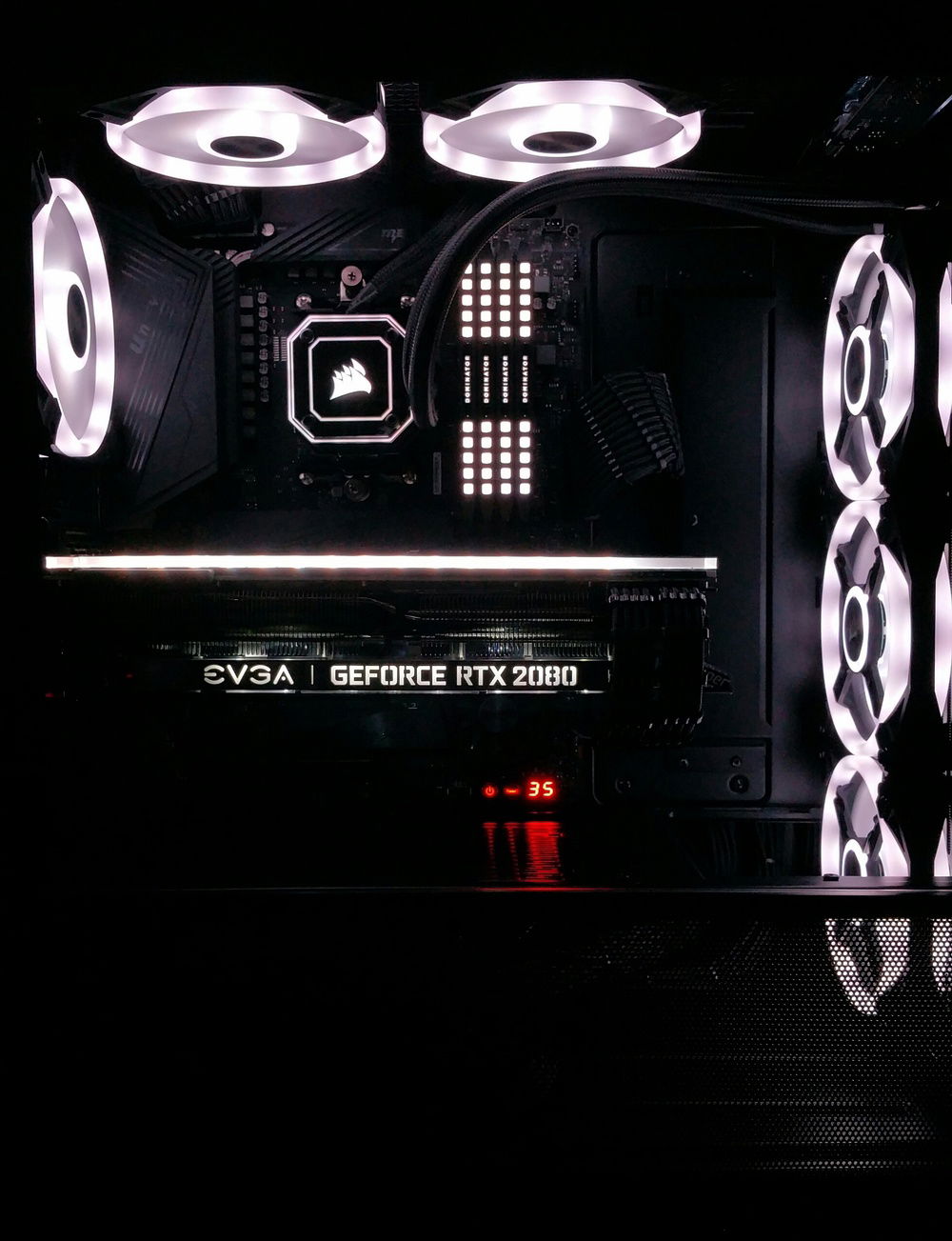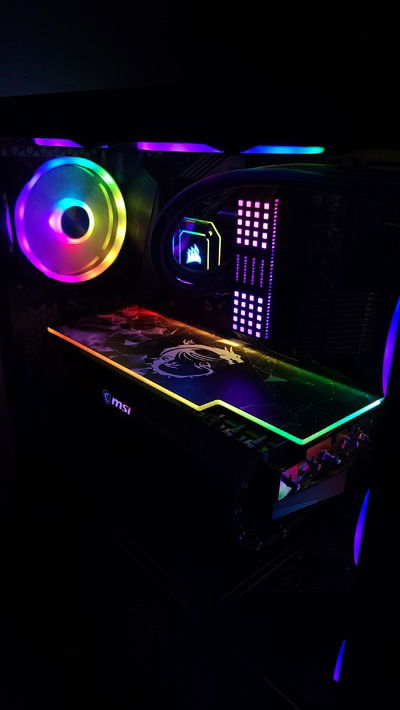Ryzen RGB Build
AMD Ryzen 9 3900X
CableMod PRO ModMesh (Black)
Corsair Commander Core
Corsair Commander Pro
Corsair Dominator Platinum RGB (32GB DDR4-3600 CL18)
Corsair H150i Elite
Corsair Lighting Node Core
Corsair QL120
EVGA RTX 2080 Super
EVGA SuperNOVA P2 750
Lian Li Lancool II Mesh (Black)
MSI X570 Unify
V1tech (RGB backplates)
CableMod PRO ModMesh (Black)
Corsair Commander Core
Corsair Commander Pro
Corsair Dominator Platinum RGB (32GB DDR4-3600 CL18)
Corsair H150i Elite
Corsair Lighting Node Core
Corsair QL120
EVGA RTX 2080 Super
EVGA SuperNOVA P2 750
Lian Li Lancool II Mesh (Black)
MSI X570 Unify
V1tech (RGB backplates)
Color(s): Black White
RGB Lighting? Yes
Theme: none
Cooling: AIO Cooling
Size: ATX
Type: General Build
Contests
This build participated in 2 contests.
| Rank | Contest | Date |
|---|---|---|
| #122 | Build of the Month - March 2021 | ended |
| #404 | EK 10K Challenge | ended |
Build Updates
Upgraded CPU, GPU, & PSU
My experience building this system
Hardware
CPU
$ 199.99
Memory
$ 189.99
Graphics
$ 999.99
PSU
$ 178.02
Case
$ 239.95
Case Fan
$ 494.46
Cooling
$ 129.99
CableMod
$ 175.00
Accessories
$ 74.29
Accessories
$ 35.00
Estimated total value of this build:
$ 3,209.35
Approved by:





















